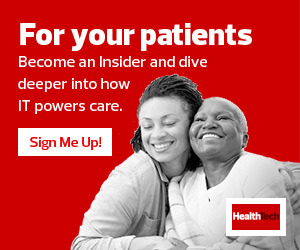What Is Electronic Directly Observed Therapy?
The use of mobile devices such as smartphones and tablets, as well as webcam-enabled home computers, has paved the way for eDOT treatment programs for patients with tuberculosis or diabetes, or transplant recipients on complex immunosuppressive regimens.
During a live eDOT visit, the clinician and patient schedule a specific day and time to meet virtually, and the clinician watches the patient take his or her medication in real time.
This gives clinicians the opportunity to ask patients how they are feeling, check the medications before they are taken, ask them if they are experiencing any side effects, and answer any questions the patient may have.
Recorded eDOT is when the clinician and patient do not set a specific time to meet, and the patient records himself or herself taking the medications. The patient then saves the recording and sends it to the provider for review.
The Benefits of eDOT Technologies
Sebastian Seiguer, CEO of emocha Health, developer of an eDOT platform, says patients are becoming more comfortable with, and more desirous of, video-based care that can help with medication adherence.
“When we talk about chronic disease, we know health outcomes are not what we want, medication adherence rates are abysmal, and costs are exploding,” he says. “A lot of patients lack the infrastructure around them to be successful taking the medications, and they need a little help.”
In 2014, emocha Health launched an asynchronous eDOT offering with a two-part video component: The patient’s part is a video recording, and the provider responds in various formats, either by calling back or recording a video message to send to the patient.
DISCOVER: The benefits of remote patient monitoring are wide ranging.
“When that patient is getting ready to take the medication again, they’ve got personalized feedback to adjust their technique, or tips on timing,” Seiguer says. “Patients don’t internalize everything they were told when that medication was first prescribed. This human interaction at every dose resolves those problems.”
Healthcare providers can also use eDOT to adjust some habits, such as taking diabetes medication with food, making sure transplant recipients are taking their medication punctually, or providing assurance about side effects. It can also aid the clinician in providing daily coaching or training to patients.
“We’ve proved that with asthma, we can train a child to use their inhaler correctly,” Seiguer says. “That’s an example where the patient may really want to take the medication but may not be taking it correctly. Kids cannot correctly use an inhaler with one lesson and without additional reinforcement.”
eDOT Helps Children Use Their Inhalers Properly
Dr. Scott Krugman, vice chair of the department of pediatrics at the Herman & Walter Samuelson Children’s Hospital at Sinai, implemented a 24-patient pilot project in partnership with emocha Health using eDOT technology to help improve treatment of asthma in children.
“Asthma is the most chronic condition in kids, and optimal treatment relies upon controller medication, so when kids are optimally taking their controller medicines, they’re less likely to end up in the ER,” Krugman says. “For years we’ve been trying to come up with ways to make sure families teach their children proper inhaler use.”
The program involved patients uploading secure videos to be reviewed by their care provider who, in turn, would record a video response with feedback aimed at improving controller use techniques.
MORE FROM HEALTHTECH: Find out what's next for telehealth.
“We work really hard to teach these things, but we still struggle with families remembering to do it every day and do it correctly, so when we were approached with this idea, we were all in,” Krugman says. “We’ve never had a tool to do that before. It’s like Snapchat, and every kid loves Snapchat. To be able to review and consult with patients and their families — that’s fantastic.”
Krugman sees opportunities to use eDot for a variety of conditions, including helping patients with diabetes.
“This technology could be used to help teach patients the proper adherence for injections and scheduling of medicine — eDOT is prime for that use,” he says. “There are definitely other case scenarios where you have an extra layer of complexity with medication delivery, and using eDOT helps us know that the patient is doing it right.”











